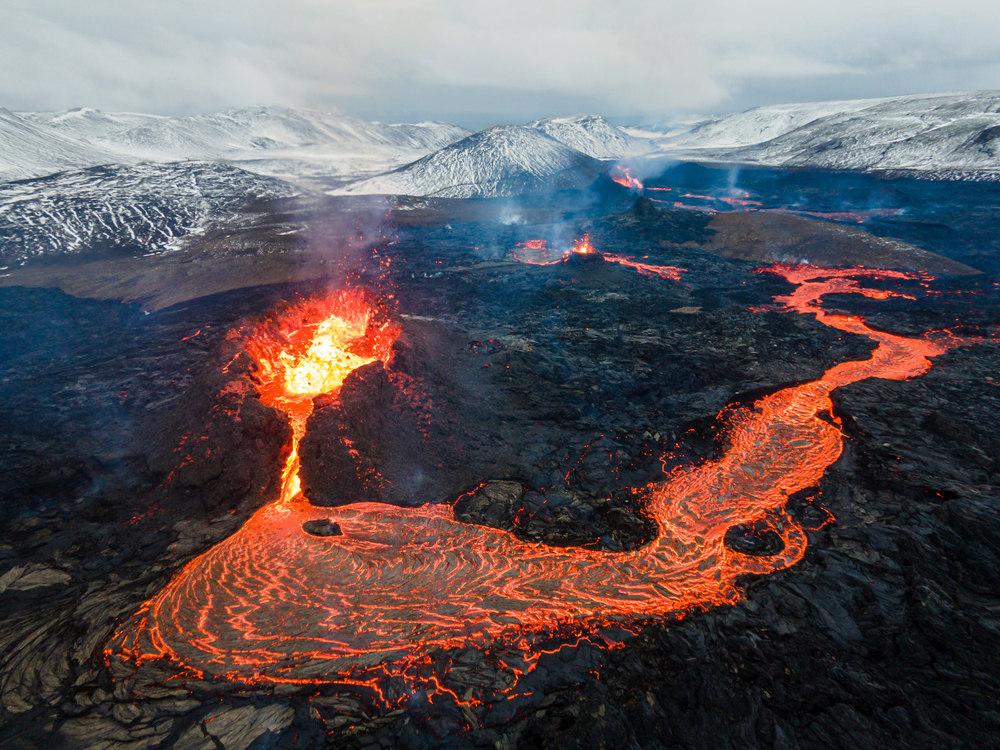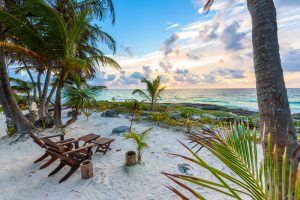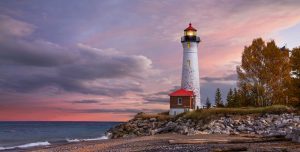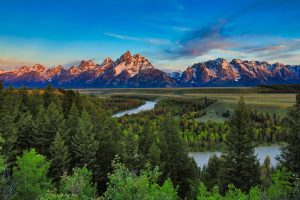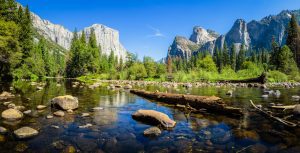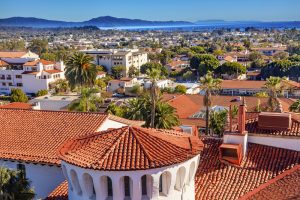While a visit to Iceland should be on everybody’s bucket list, it is definitely one of the most expensive countries to visit.
The good news is that there are plenty of ways to make the most of your time here without having to spend a dime, so you can focus your budget on other things like food and transportation.
Much of Iceland is made up of extraordinary geological formations, diverse environments, and an abundance of active wildlife.
Therefore, you can dedicate most of your time to the country’s natural wonders without ever getting bored.
Explore towering waterfalls, active volcanoes, picturesque canyons, and create priceless memories you’ll be talking about for years to come.
Check out this list of the thirty best free and cheap things to do in Iceland so you can make the most of your trip.
Table of Contents
1. Landbrotalaug Hot Springs
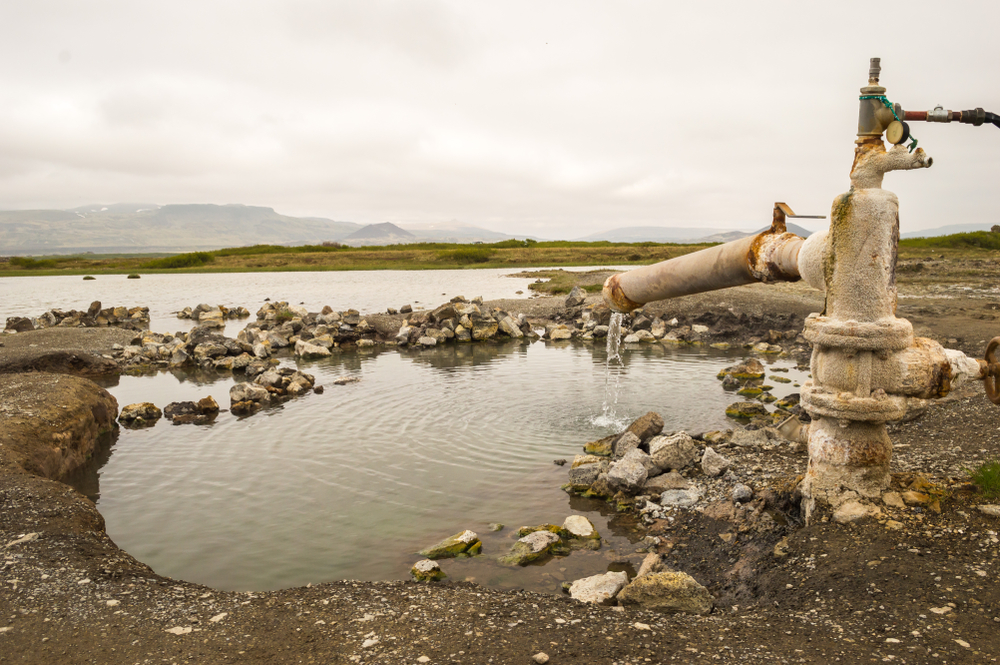
Tucked away on the Snaefellsnes Peninsula, Landbrotalaug Hot Springs has managed to remain one of Iceland’s hidden gems thanks to its remote location.
So although an adventure to these secret hot springs is worth a trip, just keep in mind that they are not the easiest to find.
There are no signs leading up to the springs and the only way to correctly navigate here is by putting exact coordinates into your GPS (not just the name of the springs).
Although hard to find, the journey here doesn’t require a four-wheel-drive vehicle so anyone visiting Iceland can bask in its beauty.
Even better is the fact that this hot spring is almost always empty so you can enjoy a peaceful soak here all to yourself.
At this location, you will actually find two hot spring pools that vary in temperature and size so make sure to take a dip in both to see which you prefer.
This attraction is completely free, so you can spend the entire day here soaking in the water (and the views) without a worry in the world.
2. Hveravellir Hot Springs
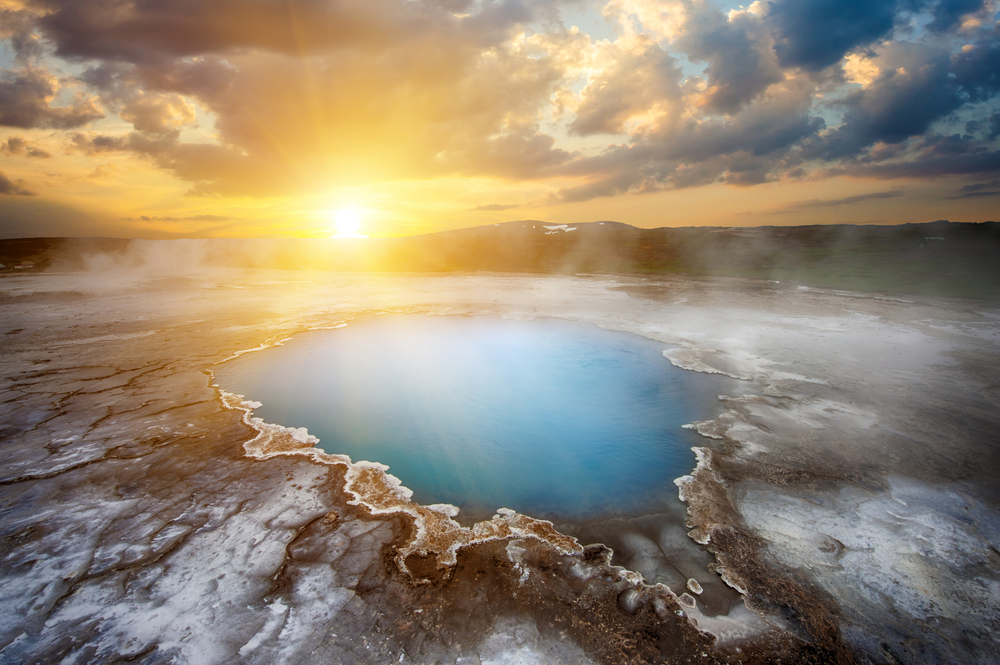
Also known as one of the most breathtaking geothermal areas in all of Iceland, the Hveravellir Hot Springs is another great place to stop for a free afternoon of mineral soaking.
These springs are located at the heart of Iceland’s central highland within a wide-sweeping nature preserve that gives way to some incredible views.
Along your drive to this hot spring, you will encounter ancient turf rest houses that date back to the 900s when Vikings roamed the area.
The hot springs were created as a result of the dam that was built along the flowing river back in the 1950s and has become an iconic Icelandic spot ever since.
Just know that since these springs are out in the middle of a remote wilderness, you won’t find amenities like changing rooms or a nearby place to grab a bite to eat.
There are, however, bathrooms on-site if you are willing to take a long walk from the springs to reach them.
Regardless, you should make sure to come to these springs with everything that you could need to enjoy your time there.
After you’ve had enough time soaking in the mineral-rich waters, feel free to explore the surrounding area where you can admire a variety of geothermal activities like mud pools and fumaroles.
3. Einar Jónsson Museum’s Sculpture Park
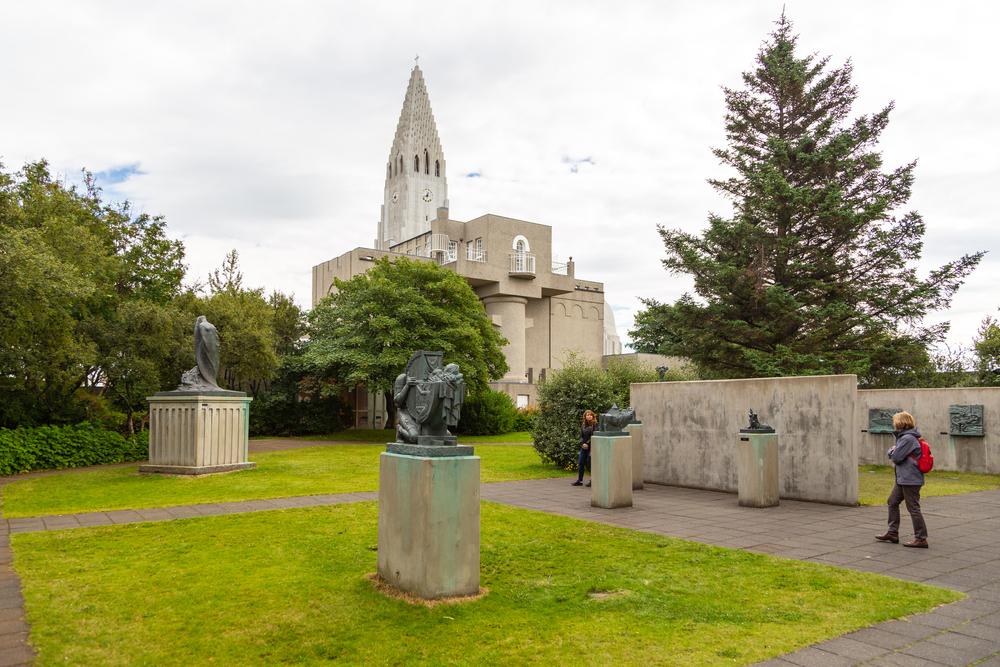
Depending on your budget, the Einar Jónsson Museum has something for everyone to enjoy, and you can never go wrong with a free visit to its sculpture park.
The sculpture park is located on the grounds of the museum and is open all year round so that visitors can enjoy its splendor during any season.
This free attraction dates back to June of 1984, and although there have been various changes throughout its lifetime, you can still admire the remnants of the original owner’s work.
Amongst the garden, you will find twenty-six bronze statues, some of which were originally located within the museum before being brought to the garden.
4. Northern Lights

One of the main reasons that people travel to Iceland is for a chance to catch a glimpse of the iconic natural phenomenon that is the Northern Lights.
It is important to note that there are a large variety of factors that will determine the best time to see the Northern Lights during your visit, so make sure to keep an eye on the weather cloud coverage.
Luckily, Iceland knows how badly people want to see these lights, so they have set up an aurora forecast to help visitors make their dream a reality.
And while you have a chance of seeing these dancing lights just about anywhere in the country, there are a few places that are known for rewarding visitors with one of the very best shows.
If you are visiting the Reykjavik region, you will have options like Þingvellir National Park and going on a guided boat cruise. But if all else fails, all you’ll really need to do in this area is find a place free of light pollution, sit down, and wait for the magic to happen.
But for a more spectacular experience, head to more remote parts of Iceland and see the way the lights dance across the glaciers at Jökulsárlón or above the black sand beach at Reynisfjara.
5. Reynisfjara Black Sand Beach
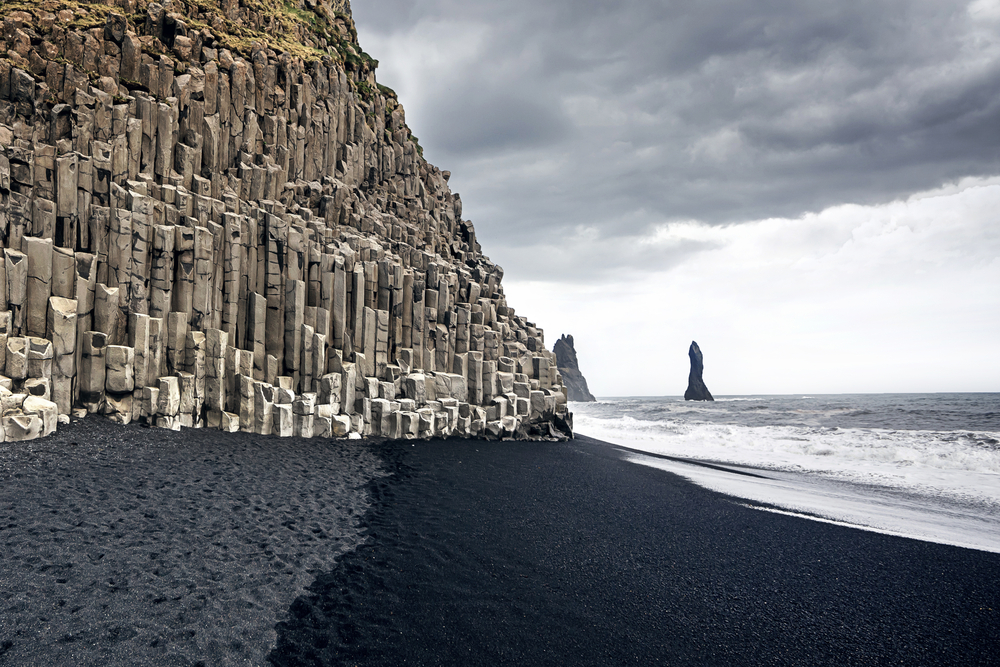
Speaking of Reynisfjara, this iconic black sand beach is one of the most popular tourist attractions in all of Iceland, and it’s not hard to figure out why.
Travelers and photographers from around the globe visit this famous beach for a chance to admire the way the white crashing waves contrast with the deep black sand.
Plus, the Reynisdrangar sea stacks that are located here are famous in their own right as people all over social media dream of getting a picture of themself sitting atop the basalt columns.
Just know that this is not the kind of beach that you go for a swim at, but rather one where you spend the day walking along the shore and marveling at its wild beauty.
In fact, the waves here are extremely dangerous, so it is advised that visitors keep a safe distance from the crashing waters at all times.
The water has a way of creating drastic waves that tumble their way up the shoreline without a moment’s notice, so always make sure to keep an eye on the water during your visit.
6. Glymur Waterfall

Known as the second tallest waterfall in the country, no trip to Iceland would be complete without paying a visit to the beautiful Glymur waterfall.
And it wasn’t until recently that Morsárfoss stole the title of the highest waterfall, so most people who speak of Glymur still refer to it as the tallest waterfall in the country.
But you will forget all about labels when you make it to this grand display of falling water, as the surrounding landscape and powerful flow of water will leave you completely breathless.
The water drops down into a magical canyon made up of green moss, and the journey to reach this waterfall is just as rewarding.
This iconic waterfall can be found just an hour outside of the capital, so you can expect to share this experience with plenty of other travelers.
However, you will be more focused on the views as every step of this four-mile hike has something truly breathtaking to offer.
There are two routes when it comes to enjoying this waterfall hike and which one you pick will depend on whether you prefer a loop or out-and-back style trek.
Most people opt for the loop as it lets you admire the waterfall from different angles but just keep in mind that this can only be done at certain times because it requires you to wade through a river.
7. Nautholsvík Beach

Considered one of the most unique beaches in Iceland, locals and tourists alike rave about the perfect swimming water that makes up Nautholsvík Beach.
This geothermal beach is one of Iceland’s newest editions, having been created just a mere twenty years ago, but it has quickly built a following.
The beach blends the cool waters of the sea with bubbling geothermal water in order to create a swimming hole for visitors with an ideal temperature.
Towering seawalls help to keep the combination of temperatures just right so during the summer months, this beach completely fills up with people.
In order to make the most of your time here, you should visit the beach during the summer months when admission is free and get an early start in order to score a spot to lay out your towel.
The beach is fully equipped with all the amenities you could need to have a good time, including changing rooms, bathrooms, showers, and hot tubs.
8. Free Walking Tours Reykjavik
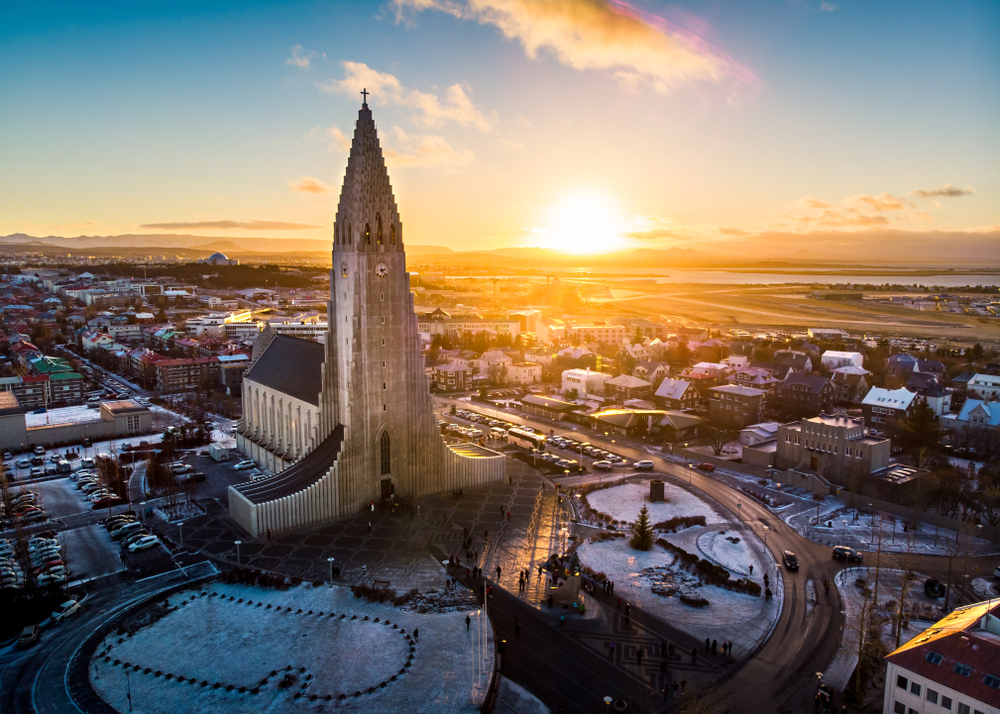
If you like to learn about the history of the new places that you visit, then you have to check out the Free Walking Tours in Reykjavik.
Although the cost to participate in this tour is completely free, the walking tour runs a donation system so consider skipping this option if you don’t have a few bucks to tip your guide with at the end of the service.
But with the ability to tip whatever you feel the tour was worth, you are in complete control of your finances which makes this a great, cheap option during your trip.
The tour runs throughout the entire year, rain or shine, so there is never a bad time to join the group and learn about the many wonders of Reykjavik.
As you walk, you will learn about some of Reykjavik’s famous attractions like the Harpa concert hall and the parliament building. You will also learn fun facts about the capital in such a comedic way that it will be impossible not to laugh along with the group.
Plus, during the two-hour tour, you will get to hear interesting stories about things like elves and Vikings that were said to once call the capital home.
9. Reykjavik’s Botanical Gardens
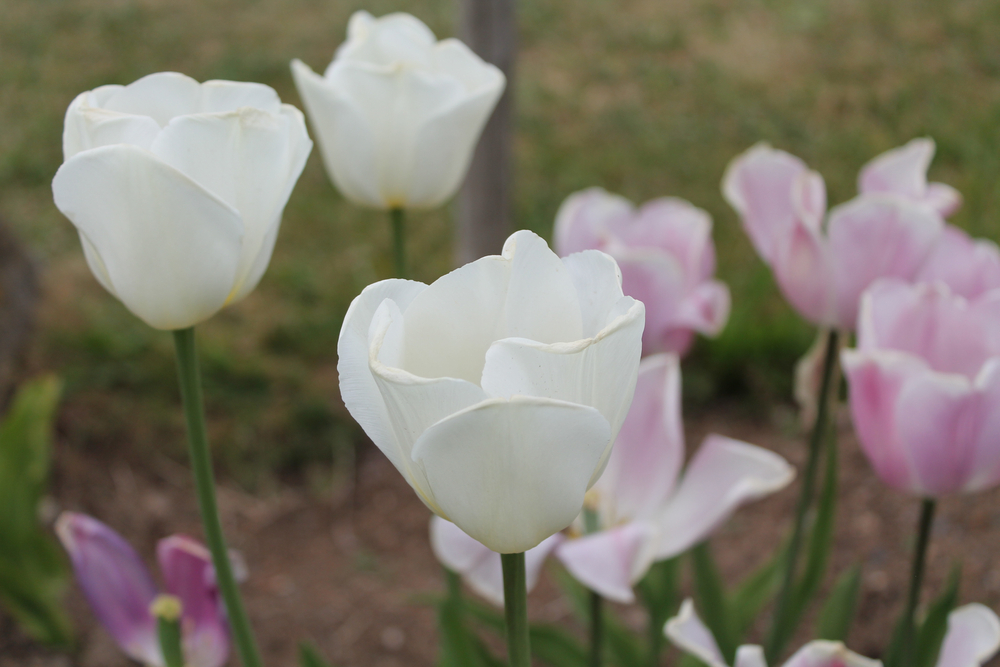
Created in 1961 by the City of Reykjavík, the botanical gardens are a local favorite, as visitors get to admire the many flowers that thrive in the Icelandic environment.
As you walk through the garden, you will exhibit eight different plant collections and the overall garden boasts more than three thousand kinds of plant species.
The garden was originally created to simply preserve these beautiful florae but has since become a hub for education and recreation.
In the summer months, visitors can enjoy a free guided tour of the garden and participate in a variety of events that take place on its grounds.
To make things easy for travelers, QR codes are on display throughout the garden that offer English translation and provide more information on the plants.
Once you have worked up an appetite, head over to the garden’s Flóran Café for a tasty treat made with ingredients locally sourced from the garden itself.
10. Grotta Lighthouse
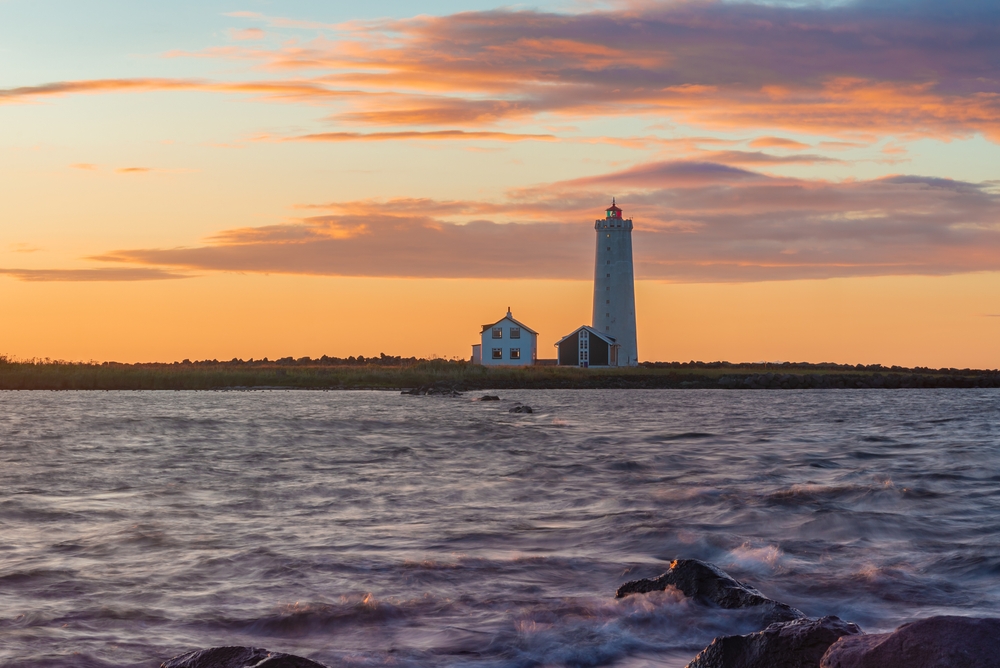
Located on a nature preserve on the very edge of the Seltjarnarnes Peninsula, the Grotta Lighthouse is a popular attraction in Iceland for various reasons.
Although the lighthouse only dates back to 1947, the preserve that it stands on has been a part of Icelandic history since the 16th century when it was home to an ancient farm.
One reason that the lighthouse became so famous is because of the striking views that complement it, like the black sandy shore and the rugged cliffs that surround it.
Not to mention the fact that on clear days you can admire the views of two other peninsulas right from its shores.
And in the summertime, Grotta becomes a haven for birdwatchers as sea birds like Arctic Terns and tufted ducks migrate here to nest for the season.
Just keep in mind that because of the fragile state of nesting birds, visitors must stay on designated walking paths during the summer months, or else they will receive a fine.
11. Sun Voyager
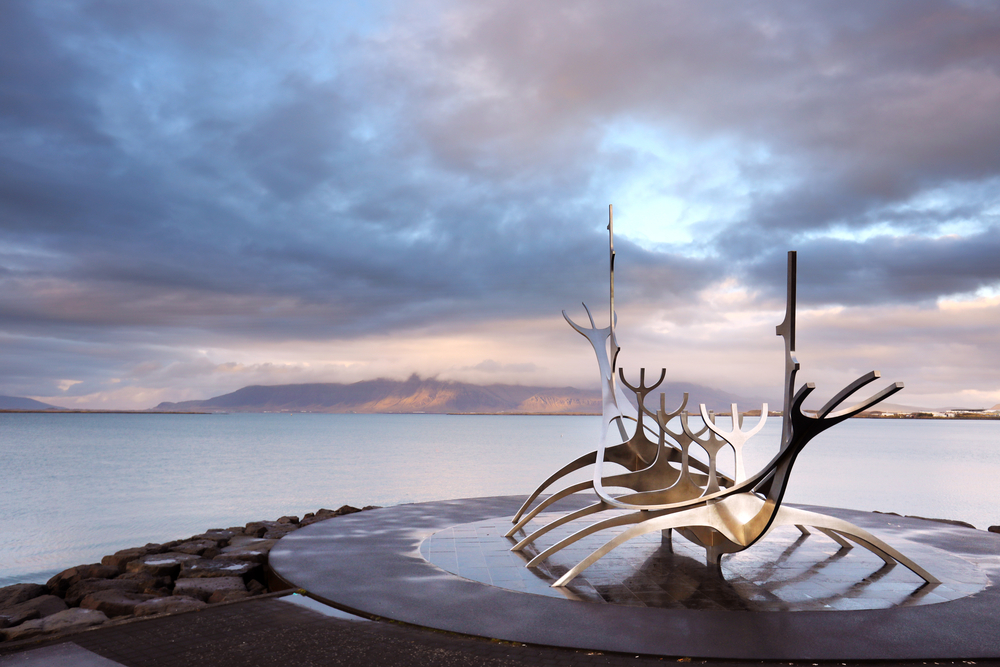
Also referred to as the Solfar, the Sun Voyager is a staple of Reykjavik and no trip to the capital would be complete without marveling in its waterfront glory.
While many people believe that the Sun Voyager was made to depict a Viking ship given Iceland’s interesting history, this was not the true vision for the sculpture.
Sculptor Jon Gunnar Arnason created this ship as an ode to the sun or a dreamboat that was designed to be a beacon of hope and light for the country.
There is no bad time to visit this sculpture, and it has become an extremely popular spot for photographers as it is perfectly placed along the shores of the sea with the towering Mt. Esja out in the distance.
12. Mount Esja
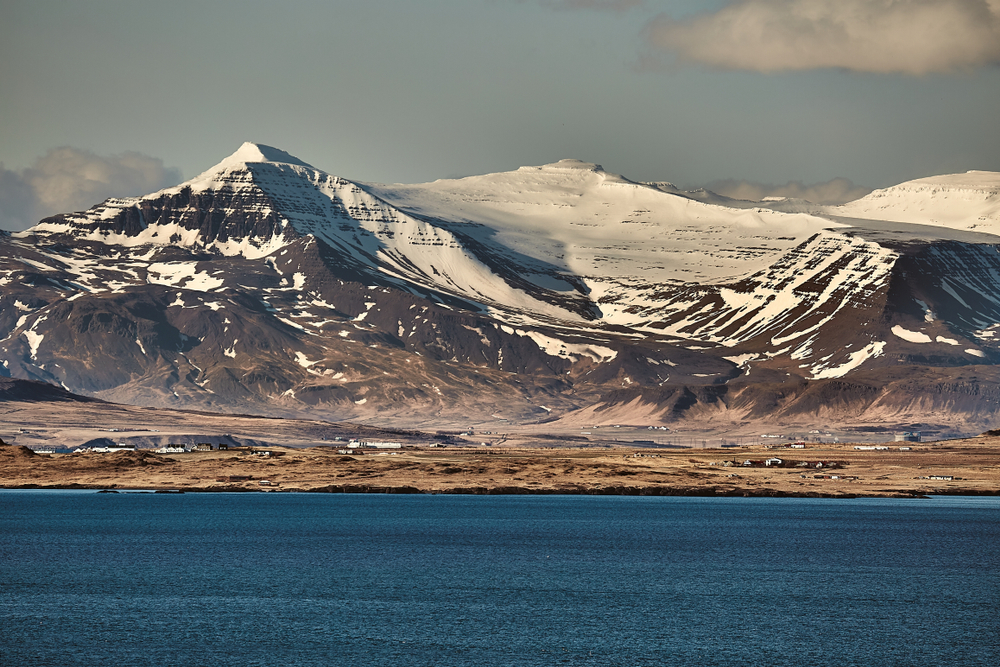
Speaking of Mount Esja, visitors will be happy to know that this iconic mountain is one of the most accessible to hike in the country and there are breathtaking views every step of the way.
There are multiple routes to reach the top of Mount Esja and you’ll notice many signs along the way offering more information about other routes you’ll encounter along the way.
It is on these signs that you will see the grading system used to describe the trail routes, with one boot being the easiest and three boots being the most difficult.
While you can climb to the top of Mount Esja at any time of year, it is important to note what winter conditions can make even the easiest of paths more difficult.
Regardless, this mountain is one of the best places to hike in the area and you can enjoy a variety of wonderful views along your journey to the top.
Once you reach the peak, take in the wide sweeping views of the city down below, and don’t forget to sign the guestbook to document your accomplishment.
13. Fjaðrárgljúfur Canyon
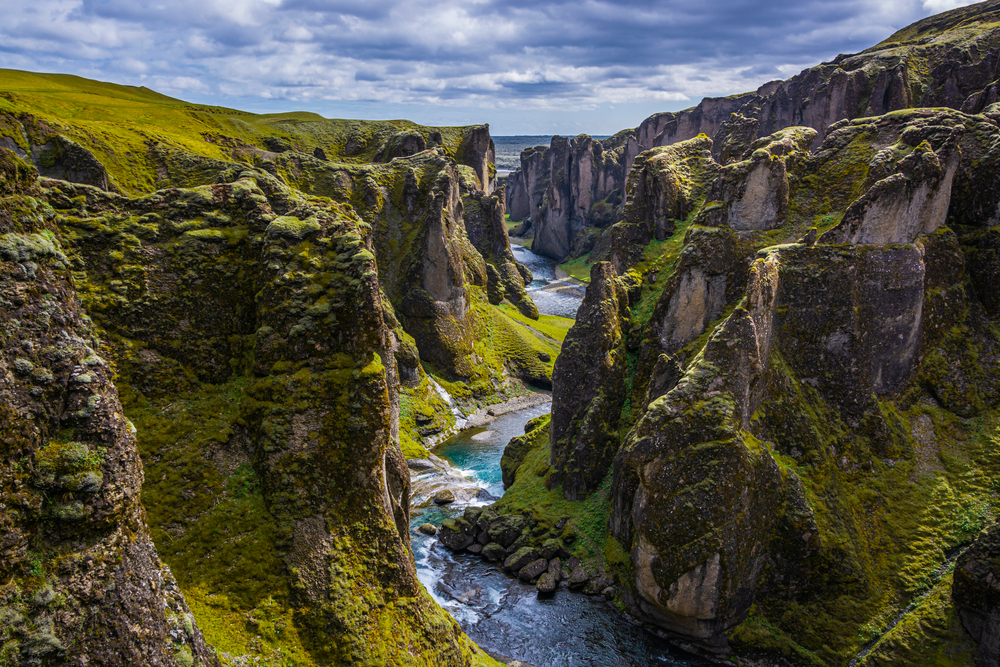
Known as one of the most breathtaking views in Iceland, the Fjaðrárgljúfur Canyon has seen a larger influx of tourism with each passing year.
The canyon dives down more than three hundred feet and stretches out more than a mile to frame a marvelous sight of turquoise waters and mossy green cliffs.
These vibrant colored waters are possible thanks to nearby glaciers that feed the Fjadra River as it passes through the canyon walls.
Once you reach the end of this canyon, you are rewarded by the views of what is now known as the tallest waterfall in Iceland.
But unfortunately, due to such an increase in foot traffic, officials have begun to shut down the canyon for certain months throughout the year to allow nature to heal.
This canyon’s diverse environment is extremely fragile so it is very important to follow closure rules to ensure that its beauty can be enjoyed for years to come.
14. Seljalandsfoss waterfall
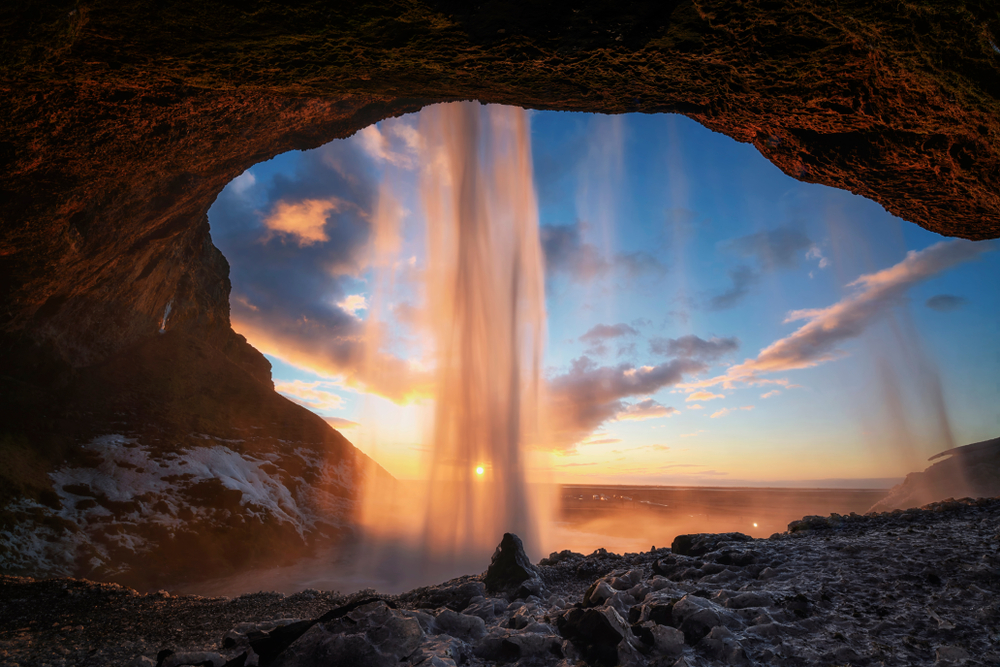
Nestled along the southern coast of Iceland, the Seljalandsfoss waterfall drops an impressive two hundred feet with views that can be enjoyed from all sides.
While the waterfall has many mesmerizing features, most people choose to visit this waterfall because it allows them to walk a full circle around its edges.
The waterfall is situated atop a high cliff that was once the border for the sea, and its deep cavern makes it easy for visitors to walk around to the backside of the falls.
Just keep in mind that getting this close to a waterfall you will be sure to get you a bit wet, so wear appropriate clothing and keep an eye on the weather.
If you have extra time on your hands, continue your journey here by visiting Gljúfrabúi, which is another breathtaking waterfall that sees a lot less foot traffic.
15. Midnight Sun
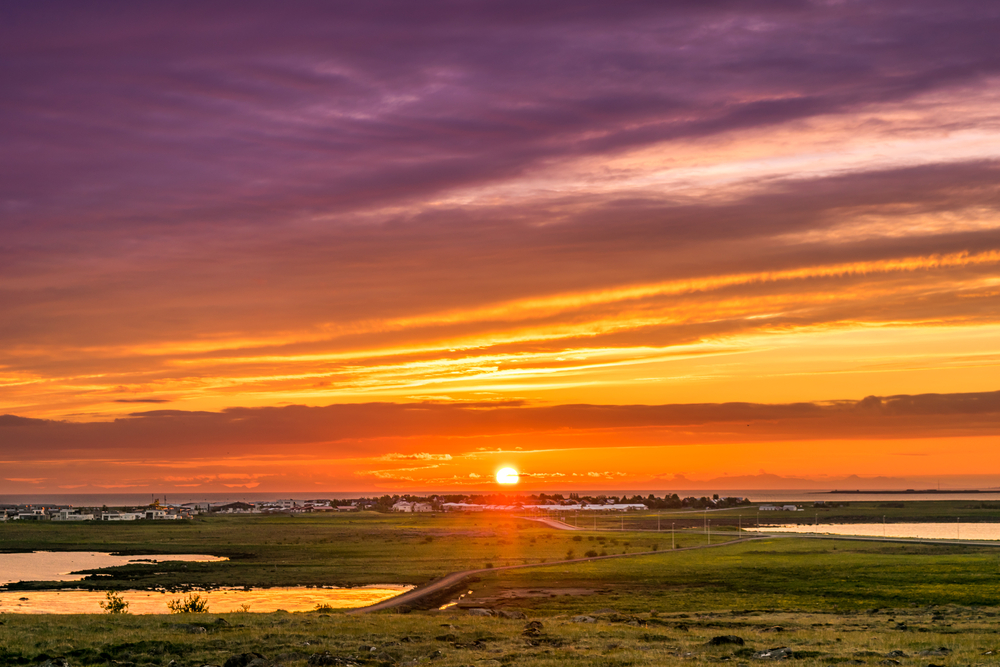
Another natural phenomenon that draws millions of visitors to Iceland each year is the Midnight Sun, and there are plenty of places to marvel in all of its glory.
For anyone who is unfamiliar with this concept, it simply means that Iceland sees zero darkness in the summer months.
During this time, the sun doesn’t set until midnight, and even then, the sky is illuminated with bright, warm colors until the sunrise a few hours later.
This means you can enjoy scenic adventures at any time of day without ever worrying about when it’s going to get dark.
Many people vacation with an opposite schedule during this time, sleeping during the day and exploring throughout the night in order to beat some of the crowds.
16. Wildlife Watching
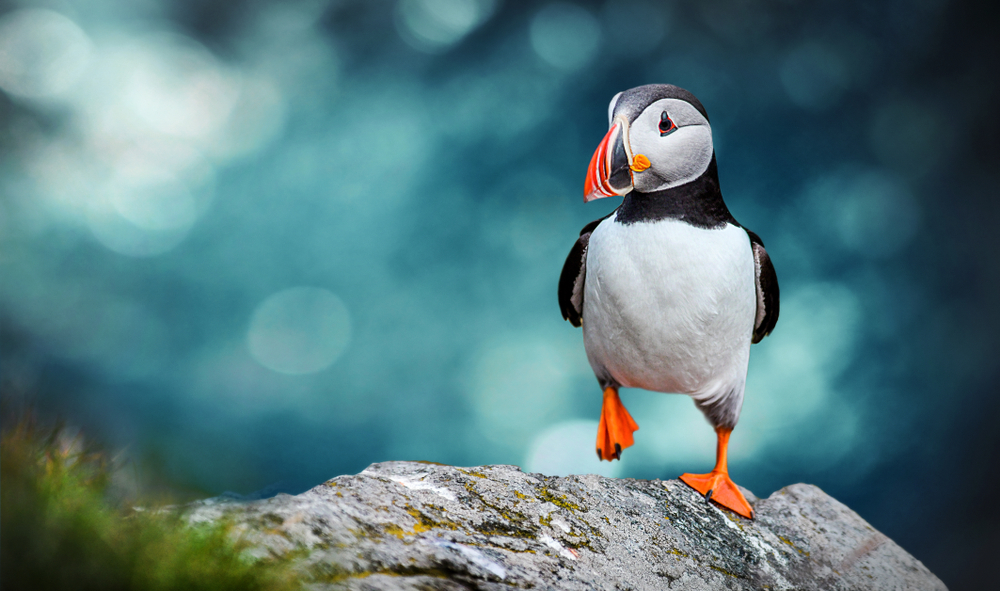
Considering Iceland’s diverse landscapes, it only makes sense that it is also home to a unique variety of wildlife that makes for some wonderful sighting opportunities.
Of all the beautiful animals you’ll see, the arctic fox is actually the only land species that is native to the country.
You have a good chance of spotting these furry creatures in any location where birds are in abundance, but sightings are most commonly reported in the Westfjords.
Norway brought reindeer over to Iceland during the 18th century, and now you find them hanging around places like Mount Snæfell and Vesturöræfi over in the eastern region.
Iceland is also known as the whale-watching capital of the continent, so tours are always taking off to sea to treat visitors to an afternoon of sightings.
And while there are endless numbers of birds to admire in Iceland, the most popular species is the puffin because of its clumsy demeanor and adorable size.
17. Vik and Dyrhólaey
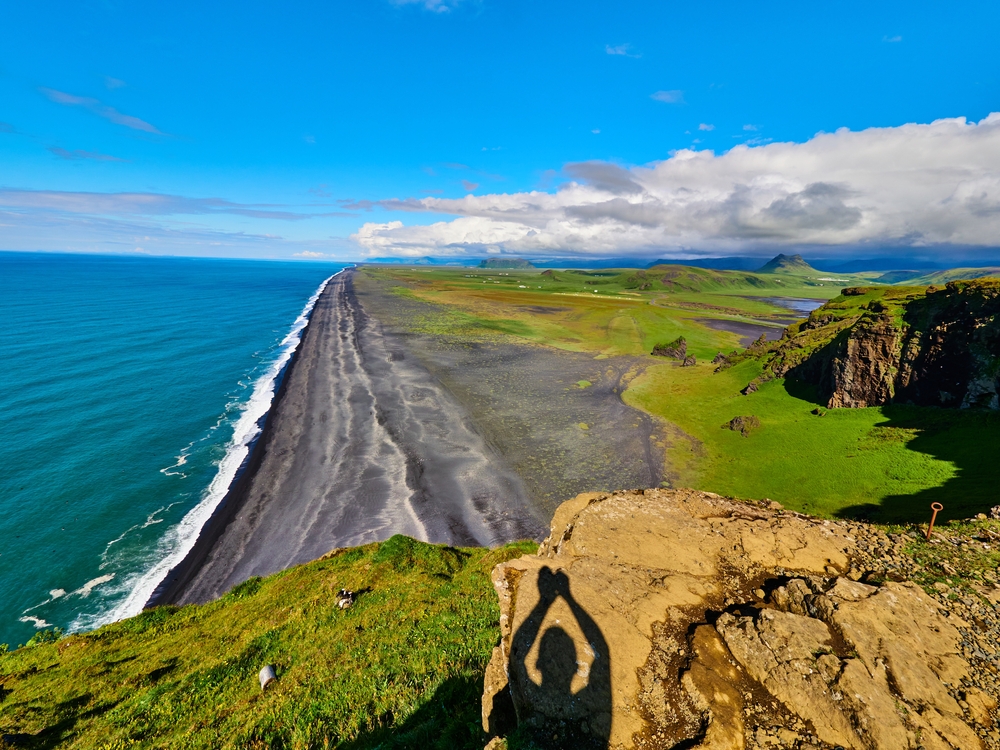
Speaking of puffins, one of the best places to catch sight of one of these adorable creatures is along Vik and Dyrhólaey, where you will find a breathtaking array of black sand beaches.
Vik is a small village that lets you get up close and personal with Iceland’s iconic black sand beaches and towering basalt columns, whereas Dyrhólaey takes you high above these sandy shores for breathtaking views overlooking it all and a sight that is truly magical.
Dyrhólaey is home to one of the largest nesting areas for puffins in all of Iceland, allowing visitors from all over the world to catch a sight of these cute birds.
Just keep in mind that this area closes down on occasion to ensure the safety of the puffins and their nesting grounds.
18. Drive the Golden Circle
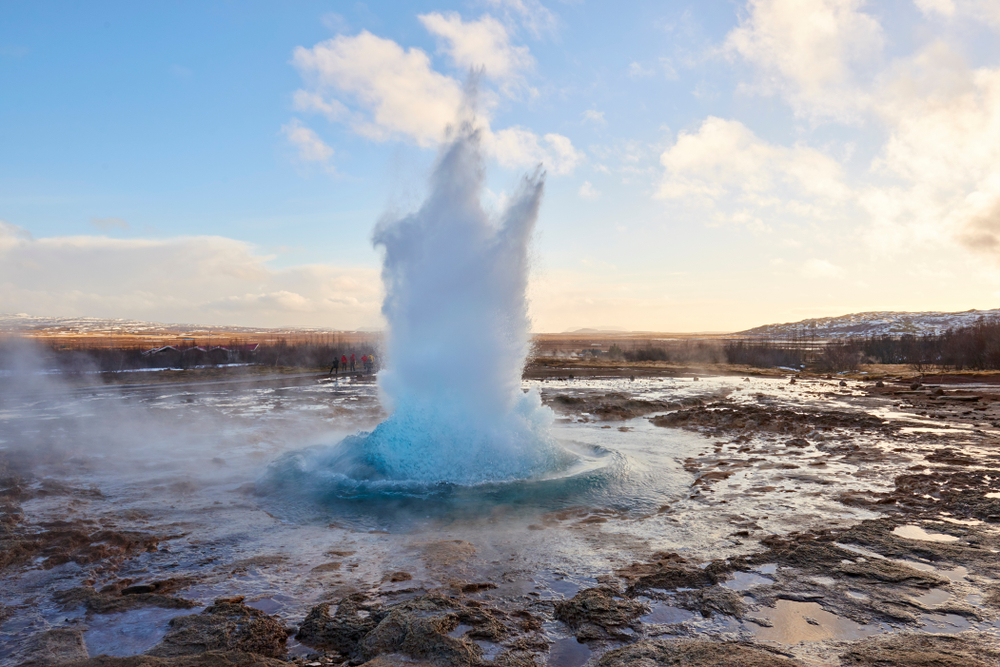
One of the most popular itineraries for an Iceland vacation revolves around the Golden Circle because it offers some of the best views in the country.
The three major highlights of the Golden Circle are Thingvellir National Park, Gullfoss Waterfall, and the Geysir Geothermal Area.
Most travelers start their journey with Thingvellir National Park where they can get insight into Iceland’s unique geology as they admire rugged cliffs, towering mountains, active volcanoes, and so much more.
This is followed by the Geysir Geothermal Area, where you can check out all kinds of activities like hot pools, fumaroles, clay pots, geysers, and so on.
Last but not least, the road takes visitors to the Gullfoss Waterfall where they can marvel at a set of cascading falls that gush down, creating endless rainbows in the process.
There are plenty of other beautiful stops along the Golden Circle, so most people will spend their entire trip driving its length and exploring the many wonders that they find along the way.
19. Jökulsárlón Glacier Lagoon
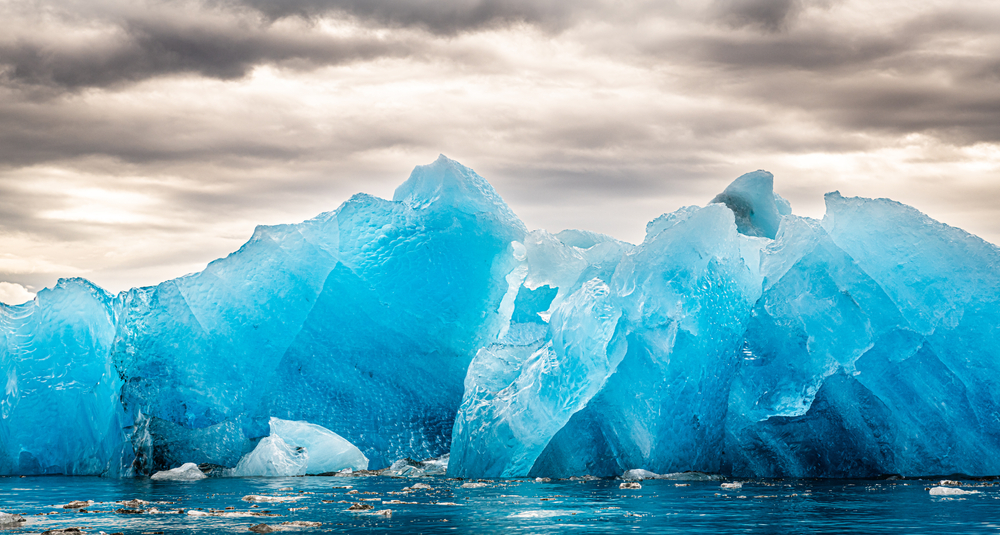
Tucked away in the southeastern corner of Iceland lies the Jökulsárlón Glacier Lagoon, and it is not only the deepest lake in Iceland, but also the most popular.
Although the lagoon is located about five hours away from the capital, this hasn’t slowed down its foot traffic, as people from all over the world travel here to marvel at its beauty.
The turquoise glaciers can appear translucent at times, and the way they complement the lagoon they sit on makes for a truly unique sight.
The glaciers you see there today date back more than one thousand years, and the lake itself is a result of ancient glaciers that have melted over time.
With that being said, the lagoon has only grown in size over the past few decades and is expected to grow even larger as time goes on.
When you come here to take in the sight of it all, make sure to keep an eye out for seals, as they are known to hang out here all year round.
20. Hallgrimskirkja Church
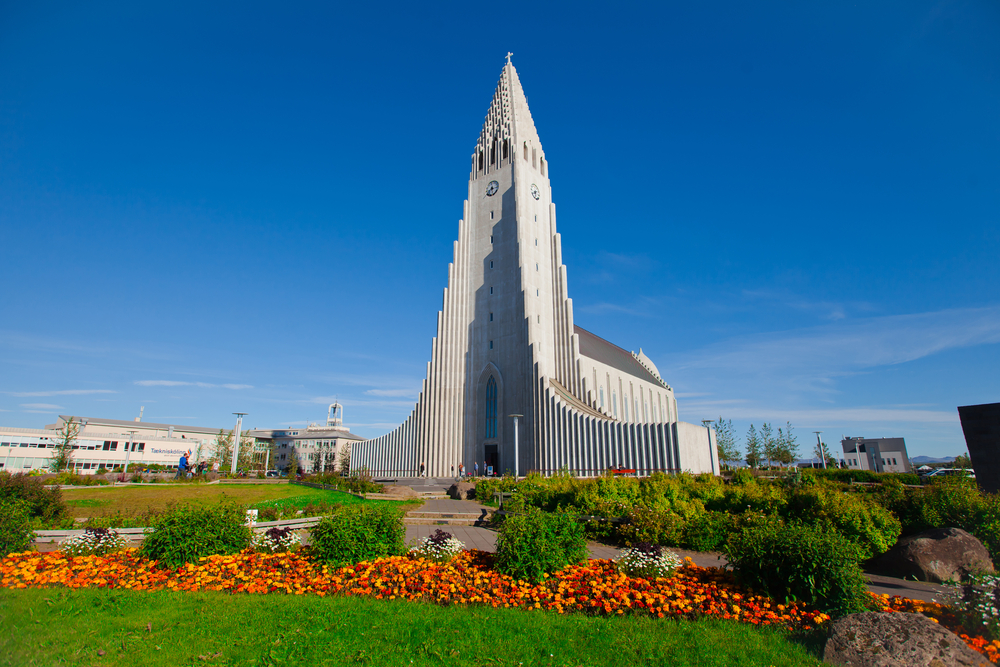
Located in the heart of downtown Reykjavik, the Hallgrimskirkja Church is not just iconic for being the tallest building in the area.
While it’s true that the church sticks out like a sore thumb, as it towers over the other buildings that make up the skyline, visitors still should dedicate the time to make a trip within its grand structure.
You will get to appreciate the views of the church from all over the capital, but what really impresses visitors is the inspirational statue that stands out front and the historic organ that lies within.
There is no cost to enter this famous church, so feel free to visit whenever you please, but just remember to be respectful as this is still an active place of worship.
If you have a few dollars to spend, you will definitely get your money’s worth if you buy the ticket to take the elevator up to the top of the tower.
Since it is the tallest building in the area, standing atop the tower provides breathtaking views of the city and the surrounding area.
21. Olgerdin Brewery
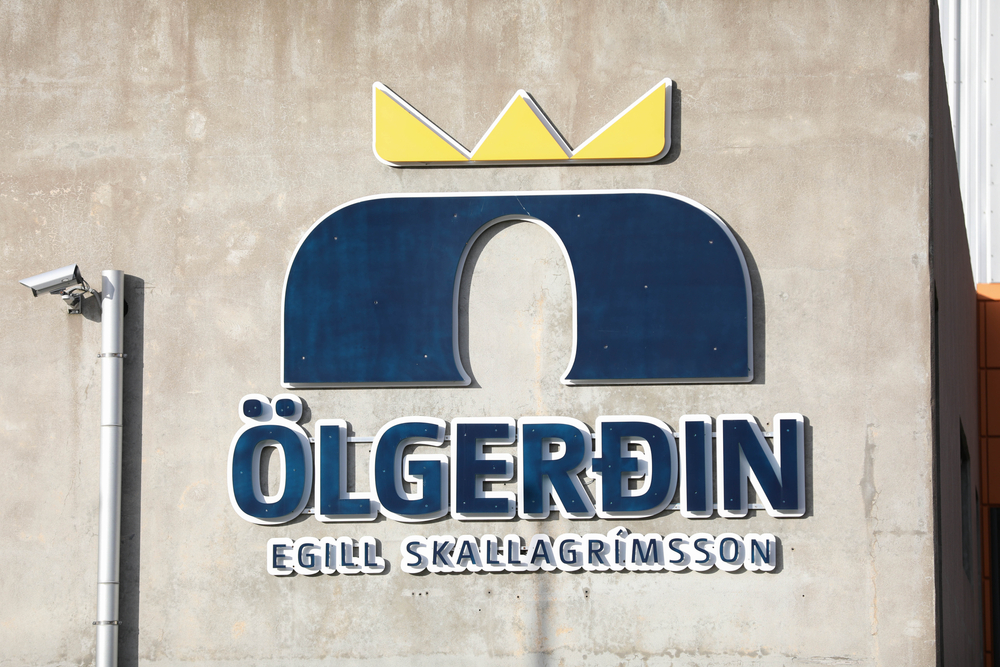
Known for being the oldest establishment of its kind in Iceland, it is only right that a trip to the country includes a tasting at this historic brewery.
The Olgerdin Brewery may be the oldest beer production business in the country, but it has remained the very best throughout it all.
The brewery has won multiple awards throughout its lifetime including “World’s Best Lager” in 2011 and “Best German-style Pilsner” in 2012.
There are plenty of ways to explore this significant business, with the most common being a guided brewery tour.
Here you can learn the history of Iceland’s drinking culture while also taste-testing some favorite brews like honey mead, Brennivin schnapps, and local craft beers.
Plus, you can schedule a hotel pick-up and drop-off for no extra charge to ensure that you can enjoy your evening without the need for a designated driver.
While this is not a free experience overall, you definitely get enough bang for your buck to make it worth the value.
22. Thingvellir National Park
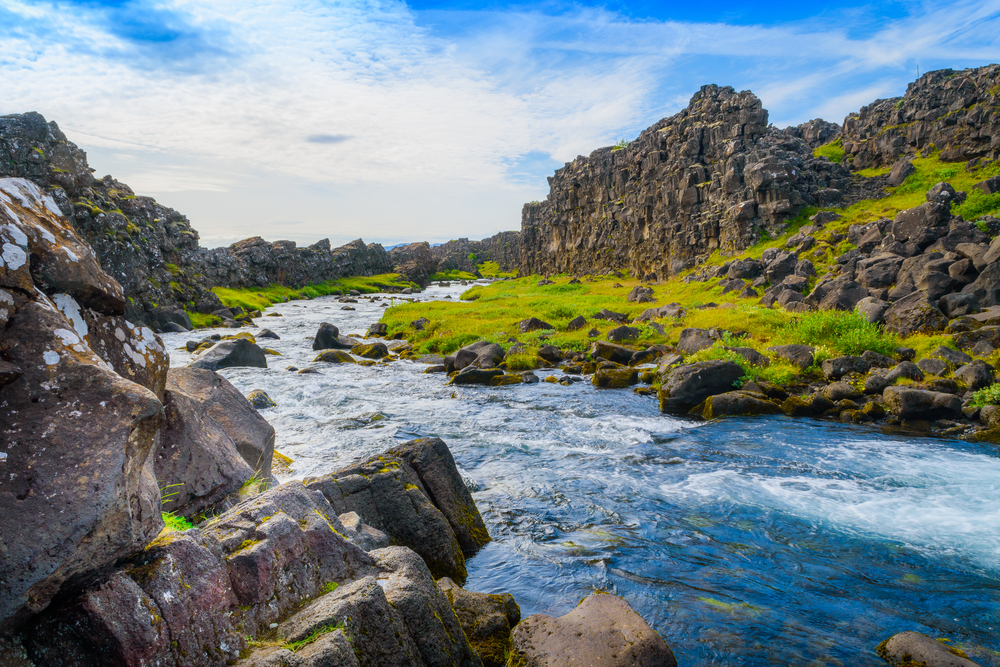
Located along Iceland’s famous Golden Circle, Thingvellir National Park is without a doubt one of the most popular attractions in the country.
However, while most people only make a quick stop at this national park along their travels, there are endless opportunities here to explore breathtaking places.
The best place to start is the Hakið visitor center, where you can become fully immersed in Iceland’s history as you take a virtual reality tour describing how it has changed over time.
From here, you should make your way over to the Öxarárfoss waterfall where you will get to walk along the edges of the world’s continental plates.
And speaking of continental plates, it is here that you can go scuba diving between said plates at Silfra, where the water is purified by past volcanic activity.
There are plenty of other great sights to see like the picturesque Thingvellir Church, the historic Althing, and the diverse Lake Thingvallavatn.
There is also an abundance of hiking trails available all over the park, with many of the hikes rated as easy to moderate.
23. Snaefellsnes Peninsula
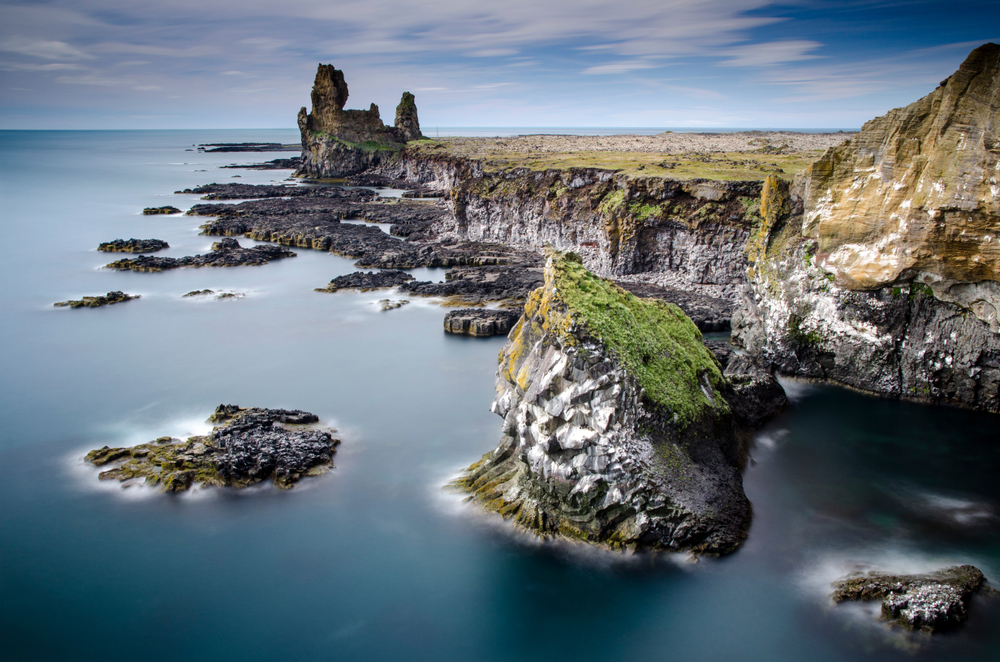
The Snaefellsnes Peninsula is known for being the best place to get a feel for all of what Iceland has to offer in one place.
Across the peninsula, you will find a large variety of natural wonders including glaciers, waterfalls, hot springs, craters, volcanoes, and so much more.
You will find many sights similar to that of the Golden Circle, so if you are looking for a less crowded alternative to this popular route, the Snaefellsnes Peninsula is your best bet.
One of the best sights on the peninsula is the Gerðuberg Cliffs, as it gives you a view of one of Iceland’s prized geological features – the basalt columns.
Another great place to check out is the Ytri Tunga Seal Beach because of its golden sandy shores and abundance of relaxing seals at any time of year.
You will notice the beauty of the Bjarnarfoss waterfall right from the main road, but do yourself a favor and walk over to the base to truly marvel at its beauty.
For the architecture lovers, a rather unique building to see in this area is the Búðakirkja Black Church because of its ominous color and remote location amongst a field of ancient lava.
These attractions don’t even begin to scratch the surface of what the peninsula has to offer, so make sure to add this interesting place to your Iceland itinerary.
24. Myvatn Lake
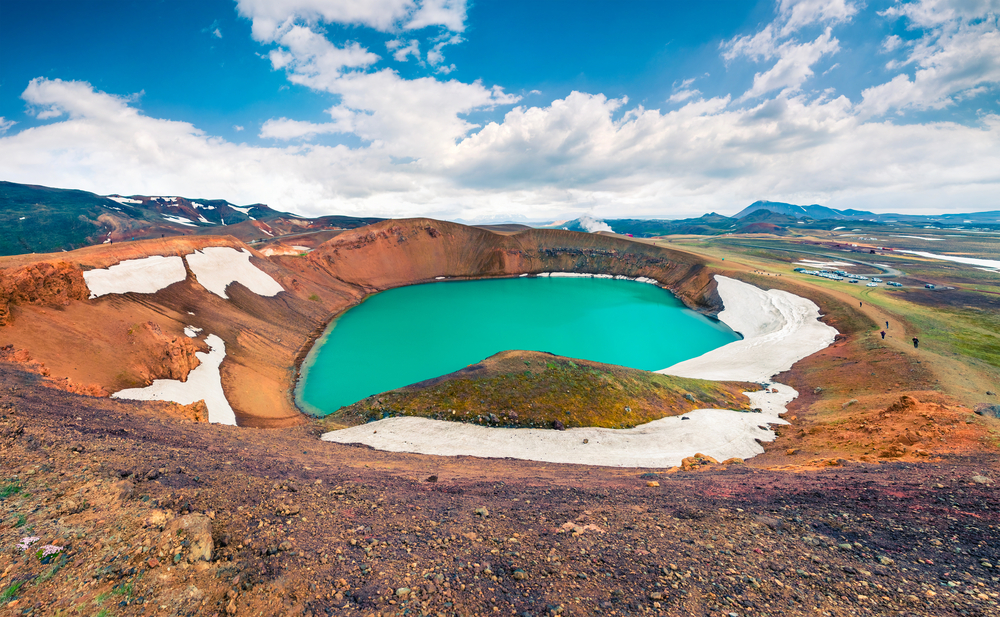
Known for being one of the largest bodies of water in the country, Myvatn Lake boasts a variety of unique features that draw visitors to its edges each and every year.
The lake is tucked away in the northern part of Iceland and is a common stop at the Diamond Circle route that explores this part of the country.
Remember to bring everything you could need for the day because as you reach the lake, the access to amenities begins to dwindle.
The only source of activity around the lake can be found in the nearby town of Reykjahlíð but even here amenities are limited.
However, a trip to the lake is beyond worth it as you get to marvel at its vibrant turquoise colors and admire the abundance of life that thrives within it.
Nearly sixty species of birds alone can be found around the lake, making it a haven for bird watchers, and there is a nearby museum that has all the possible sightings on display so that you can get excited about what you might see.
It is important to note that the lake is also prone to bugs known as midges and although they are not dangerous, large groups can make visiting frustrating as they tend to bite.
25. Skaftafell National Park
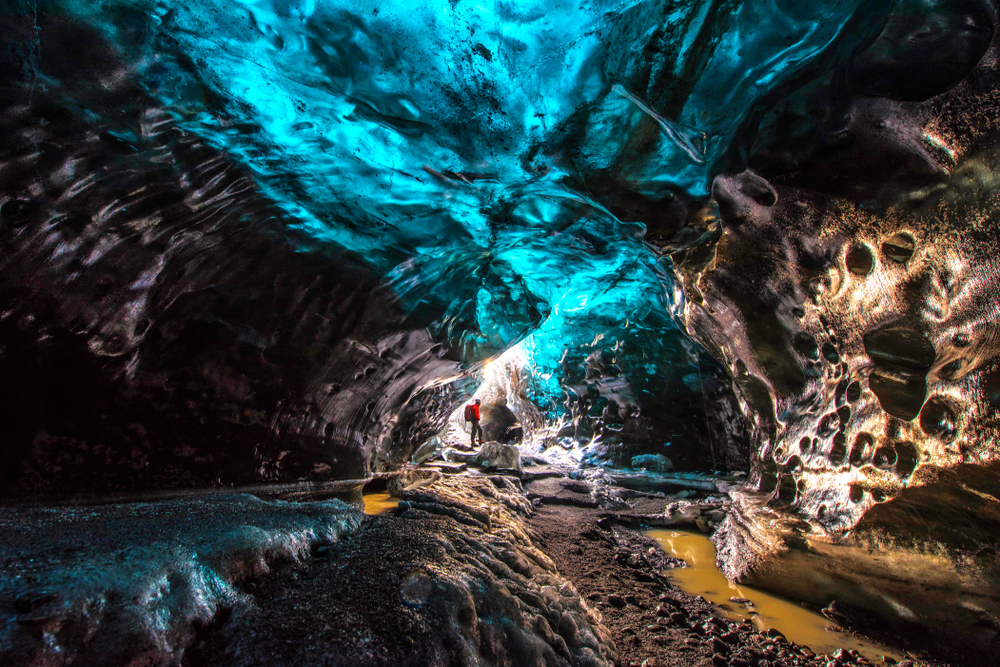
Located along the southeastern section of Iceland, Skaftafell National Park has plenty of wonderful sights to offer but the most popular attraction is its abundance of glaciers.
While there are plenty of hiking trails leading to gushing waterfalls and serene canyons, the real appeal is the ability to hike amongst glaciers.
Because this is a fragile process, you should only ever attempt a glacier hike with a certified guide and there are plenty of options available for all skill levels.
And if you happen to visit during the months of October through March, you will get to enjoy an opportunity to explore ice caves as well.
26. Fagradalsfjall Volcano
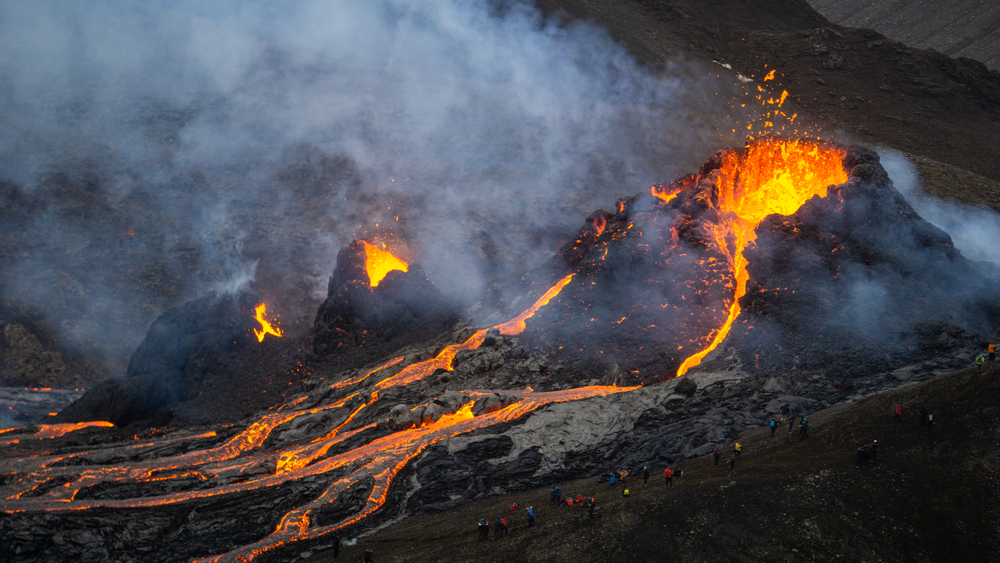
Nestled on the Reykjanes Peninsula, the Fagradalsfjall Volcano is one of Iceland’s newest sources of volcanic activity and the even better news is that visitors can get up close and personal with it.
The volcano only recently erupted in March of 2021 and is still actively spilling out lava to this day, creating a spectacular show for anyone who visits it.
But although Icelandic officials have deemed the volcano a safe place to visit, it is important to practice caution on your adventure as the weather can be unpredictable.
Poor visibility can lead you dangerously close to the flow of lava without even realizing it, so always make sure weather conditions are ideal before starting your trek.
And even though the cost to park is ten dollars, it is worth every cent as you get to see the powerful flow of lava, unlike anything you could ever imagine.
27. Heimaey Island
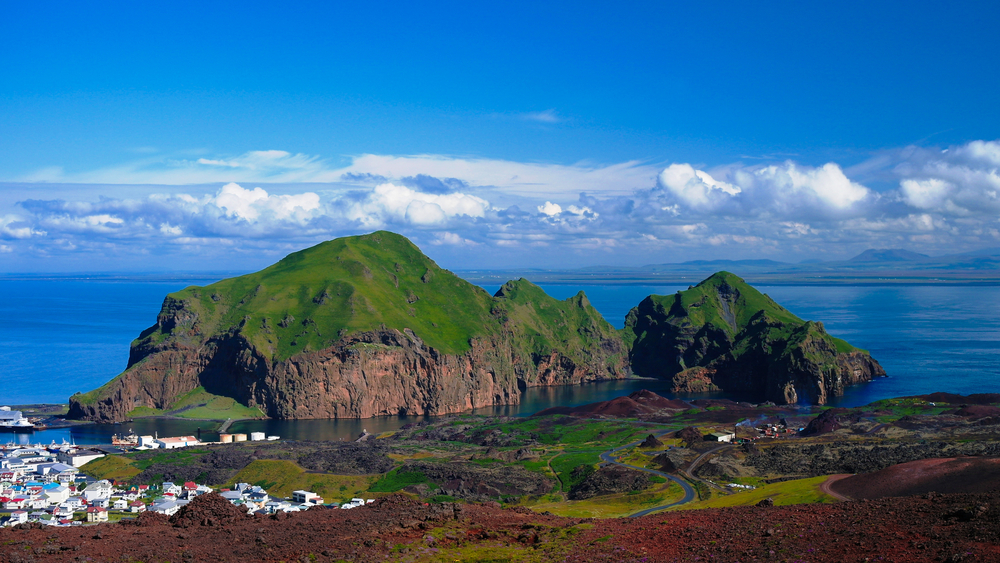
Known for being the largest of the Westman Islands, Heimaey Island is a surprisingly fun-loving place to visit considering its unfortunate history.
The islands were named after two Irish brothers who were forced into slavery. Eventually, they killed their master and ran off to Heimaey Island where they were discovered soon after.
Both men were murdered on the island and to this day you can visit the location of their separate deaths.
And this wasn’t the last dark event that occurred on the island, as pirates raided an early settlement in 1627 capturing more than two hundred people in the process.
Then again in 1973, the island suffered another tragedy as geothermal activity caused by exploding fissures left more than four hundred homes destroyed.
Yet, when you visit today you can’t help but sense the tranquil wilderness, as there is natural beauty everywhere you look and an abundance of adorable puffins always hanging out along its edges.
28. Asbyrgi Canyon
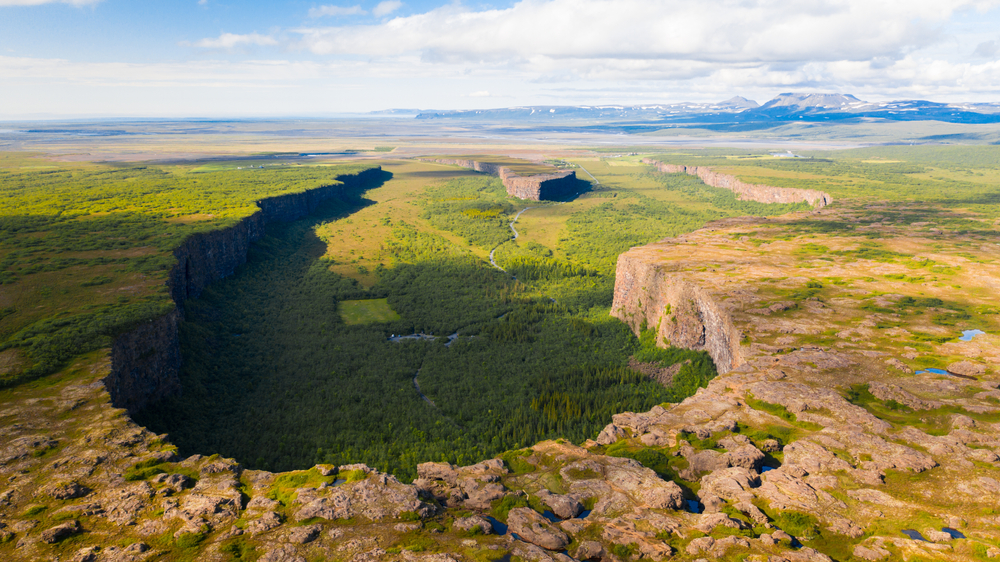
Located within Iceland’s largest national park, the Asbyrgi Canyon should be on everybody’s Iceland itinerary.
The canyon bends into a horseshoe-like shape and the walls of its cliffs tower up more than three hundred feet around its edges.
All along the floor of the canyon, you will see vibrant shades of green as vegetation thrives here and trees continue to grow.
And although it looks small in comparison to the iconic Fjadrargljufur Canyon, it provides a great alternative for people who are hoping to beat some of the crowds.
Stop by the visitor center before you head out to the canyon where a staff member can break down your hiking trail options and help you pick the hike that works for you.
One of the most visited trails in this area is to Botnstjörn pond, which takes you to the base of the canyon where you go for a scenic drive within it before reaching this peaceful body of water.
29. Vatnajökull Glacier
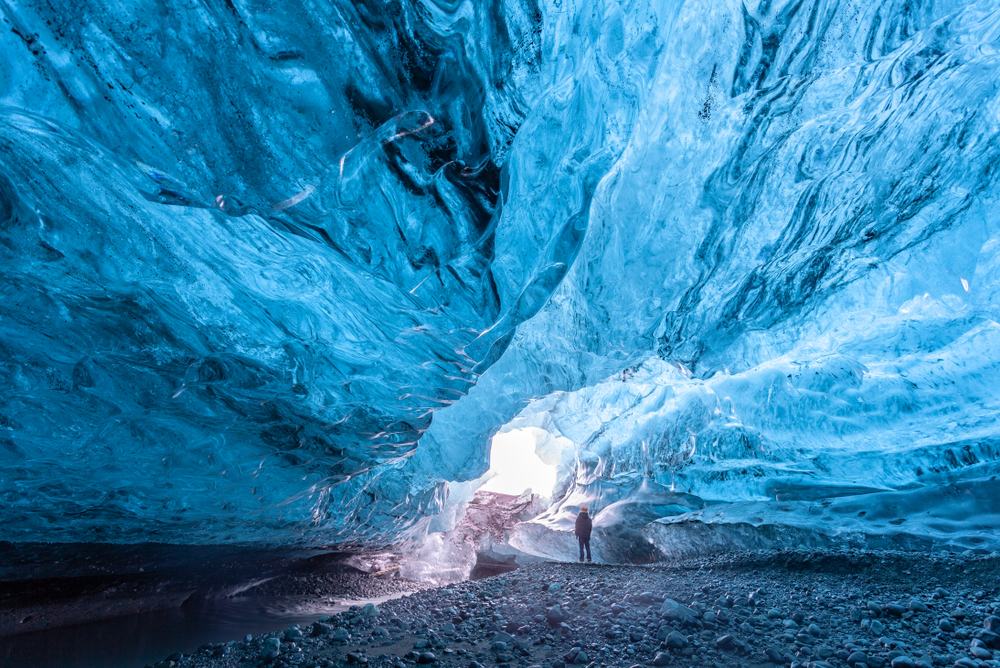
Known as the largest glacier in all of Europe, the Vatnajökull Glacier is a truly spectacular sight and there are plenty of ways to take in its massive beauty.
The glacier itself is so large that it has developed thirty smaller glaciers around its edges, giving it a surface area that stretches out over three thousand miles.
It is also the starting point to more than ten of Iceland’s most notable rivers, which will only continue to grow over time as the glacier recedes.
Unfortunately, climate change has caused the recession of many glaciers throughout Iceland, but thanks to Vatnajökull’s massive size, this process has been happening slowly.
It is believed that once this glacier recedes enough, it will expose some of the most active volcanoes in Iceland and put the country in a dangerous situation.
But for now, the glacier is the base of the Vatnajokull National Park, which stretches out more than five thousand miles and offers visitors views of all kinds of natural wonders.
30. Hvitserkur
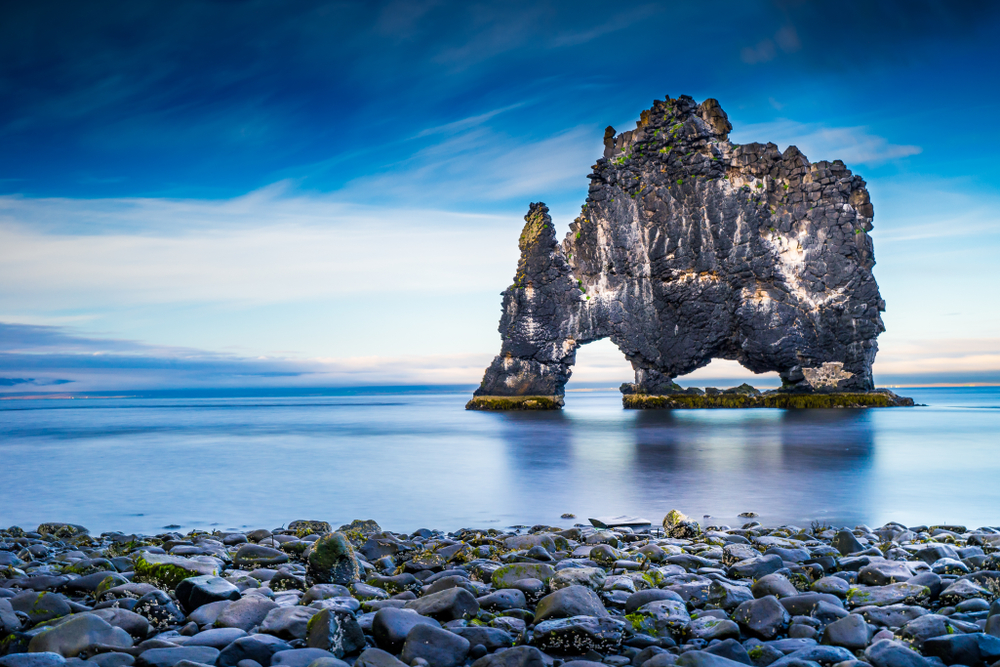
Nicknamed the “Troll of Northwest Iceland”, Hvitserkur is a prime example of the country’s iconic basalt stacks, and its unique location out at sea makes it a sight worth traveling for.
While many of Iceland’s popular basalt columns can be found amongst the sandy, black shores of the country, Hvitserkur is located out amongst the Húnaflói Bay.
This unique rock is constantly filled with nesting seagulls and other sea birds so, from a distance, it almost looks like the rock is in motion.
Most people who make it to this part of Iceland will simply admire this basalt stack from afar, but if you are really feeling adventurous, you can take a guided boat tour to it when the waters are calm enough.
There are also trails located around the beach to allow for visitors to take in different views of the rock, like the moderate hike that takes you high atop a cliff for a view overlooking this unique formation.

